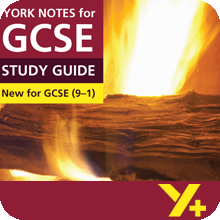Examiner's Notes
You assessed this answer as Grade 3.
Hover over the highlighted text to read the examiner’s comments.
Question: Explain how Brontë presents education in Jane Eyre.
In your answer you must consider:
- how educational settings are described
- different characters’ experiences of education.
In Jane Eyre, Brontë describes education taking place in different settings and as having very different effects on characters. These educational settings include Lowood School, Thornfield, where Adèle is Jane’s pupil, and the village school where Jane teaches. Brontë shows that educational settings, styles and systems can vary greatly and powerfully challenges the idea that education should be a harsh and humiliating experience for pupils.
At Lowood, Jane shows how the girls’ actual experiences contrast with the school’s religious ideals. Mrs Reed tells Jane at the beginning of the novel that her ‘faults’ must be ‘corrected’ and Mr Brocklehurst explains to Jane that she will learn humility at Lowood when she arrives. The schoolgirls are expected to wear plain clothes so they will not be guilty of the sin of vanity. However, Brocklehurst’s wife and daughters arrive at the school ‘splendidly attired in velvet, silk, and furs’, revealing a double standard. In her narrative, Jane records aspects of school life that are harsh and unpleasant for the girls, such as frozen water that makes it impossible to wash, and food ‘with an odour far from inviting’. Whereas Jane is critical of the environment in which she finds herself, Helen Burns takes a different view; while Jane considers Miss Scatcherd ‘cross and cruel’, Helen maintains that she is simply ‘naturally neat, punctual, and particular’. By using such contrasting adjectives to describe the same teacher, Brontë reveals different ideas about the purpose of education and the way that teachers should relate to their pupils. A more positive portrait of a teacher is presented in the way Miss Temple is described by Jane, using words like ‘encouraging’, ‘gently’ and ‘kind’.
Jane repeats her criticisms of strict educational settings in the final chapter, when she writes about visiting Adèle and removing her from the school. She describes Adèle’s appearance using the adjectives ‘pale and thin’ and eventually finds her a school with a more ‘indulgent’ system, where Adèle is likely to be happier and to progress well. The word ‘indulgent’ – with its suggestion of generosity towards children – contrasts starkly with the meanness Jane associates with Adèle’s school and with her own memories of Lowood.
At her own village school, Jane works hard to create a happy and nurturing environment. Jane wants to develop children’s potential, which is ‘as likely to exist in their hearts as in those of the best-born’. This contrasts with the more severe approach she found at Lowood.
At the beginning of the novel, Jane looks forward to going to school, but the reality of conditions at Lowood is hard for her to accept and she challenges what she perceives as cruelty and hypocrisy. However, Brontë also shows that there are different reactions to this more punishing educational approach. Helen Burns suffers hardships without complaining, whereas Jane views her treatment as inhumane. Overall, Brontë shows us that educational experiences can be life-changing in both positive and negative ways. Through the character of Jane, she perhaps gives voice to her own horror at the hardships and suffering she and her sisters experienced at school, and her belief that a more caring system is needed.
